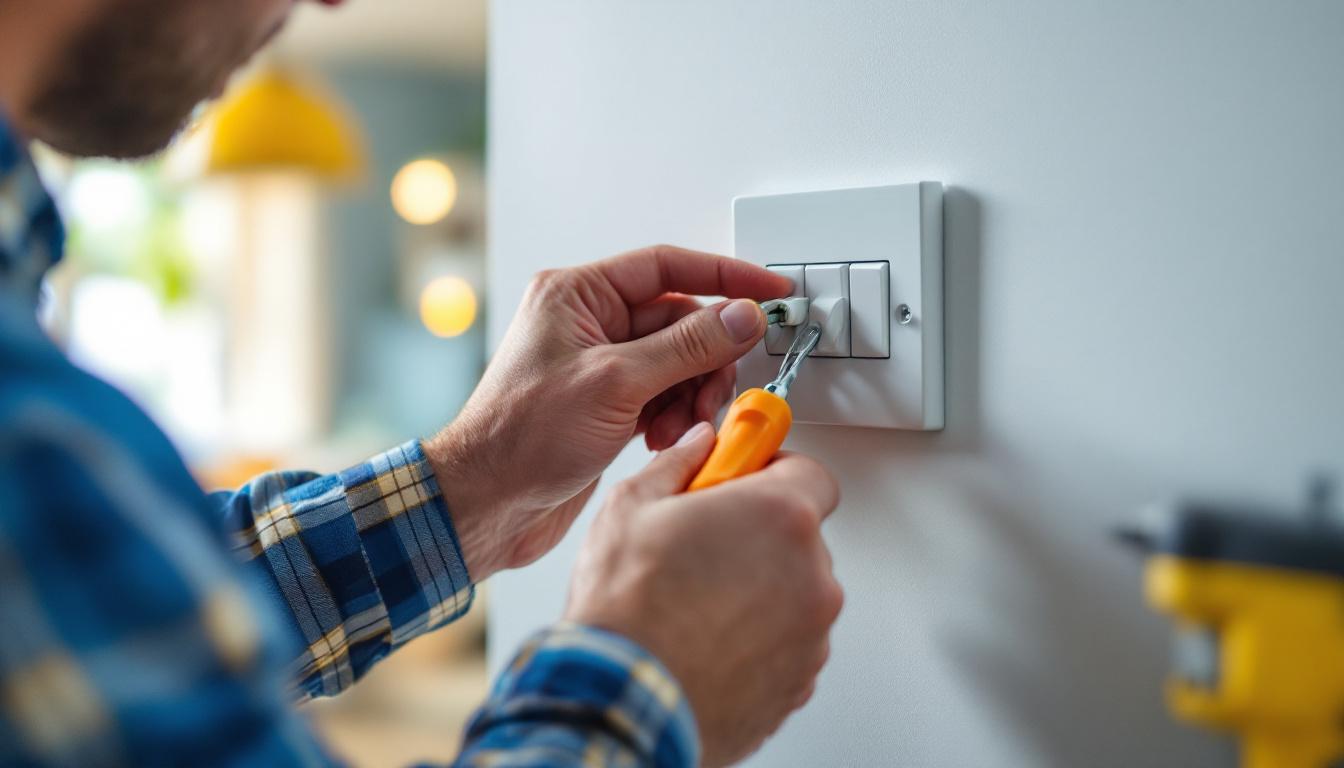
In the ever-evolving world of outdoor lighting, flood lights equipped with motion sensors have become an essential component for both residential and commercial projects. They not only enhance security but also improve energy efficiency and convenience. For lighting contractors, understanding the intricacies of these systems is crucial for delivering quality installations that meet client expectations. This guide will delve into the various aspects of flood lights with motion sensors, offering insights that can help contractors excel in their projects.
Before diving into the specifics of flood lights, it is important to grasp the technology behind motion sensors. These devices detect movement within a specified range and trigger the flood light to turn on, providing illumination only when needed. This not only enhances security but also contributes to energy efficiency, as lights are not left on unnecessarily.
There are primarily three types of motion sensors used in flood lights: passive infrared (PIR), microwave, and dual technology sensors. Each type has its own advantages and ideal applications. Understanding these differences can help you choose the right sensor for your specific needs.
Motion sensors work by detecting changes in their environment. When a person or object moves within the sensor’s range, the device triggers the flood light to illuminate. The duration of the light can often be adjusted, allowing contractors to customize settings based on client preferences. This adaptability is crucial for ensuring that the lights operate effectively without being overly sensitive or unresponsive.
Additionally, many modern sensors come with features such as adjustable sensitivity and time delays, providing flexibility in various installation scenarios. Some advanced models even integrate with smart home systems, allowing users to control lighting remotely or set schedules for when lights should activate. This integration can enhance security further by mimicking occupancy, deterring potential intruders by creating the illusion of a home that is occupied, even when it is not.
Moreover, the placement of motion sensors plays a critical role in their effectiveness. For optimal performance, sensors should be positioned to cover key entry points, such as driveways, walkways, and doorways. Factors such as the height of installation, the angle of detection, and potential obstructions should be carefully considered to maximize the sensor’s range and minimize false alarms. Understanding these nuances can significantly enhance the functionality and reliability of motion sensor flood lights in both residential and commercial applications.
Integrating flood lights with motion sensors offers numerous benefits that can significantly enhance the value of a lighting project. Understanding these advantages can help contractors make informed recommendations to their clients.
One of the primary reasons for installing flood lights with motion sensors is to improve security. These lights deter potential intruders by illuminating areas when movement is detected. The sudden burst of light can startle trespassers, making them think twice before approaching a property.
Moreover, the strategic placement of these lights can cover blind spots around buildings, ensuring that all vulnerable areas are well-lit and monitored.
Flood lights with motion sensors contribute to energy savings by ensuring that lights are only on when necessary. This feature is particularly beneficial for large properties or commercial spaces where lights may otherwise remain on for extended periods.
By utilizing motion sensors, contractors can help clients reduce their electricity bills and minimize their environmental footprint, aligning with sustainable practices that are increasingly important in today’s market.
Clients appreciate the convenience that motion sensor flood lights provide. Homeowners can come and go without fumbling for switches, while businesses can ensure that their premises are well-lit during operating hours without constant manual control.
Contractors can also offer customization options, such as adjustable sensitivity settings and timer functions, allowing clients to tailor the system to their specific needs.
When selecting flood lights with motion sensors for a project, several factors should be considered to ensure optimal performance and satisfaction.
The brightness of flood lights is measured in lumens, and it is essential to choose a model that provides adequate illumination for the intended area. For larger spaces, higher lumen output may be necessary to ensure comprehensive coverage.
Contractors should also assess the coverage area of the motion sensor, as different models have varying detection ranges. Understanding the layout of the property can help in selecting the right product.
Outdoor lighting fixtures must withstand various weather conditions, from heavy rain to extreme heat. When selecting flood lights, it is crucial to choose models that are rated for outdoor use, with features like weatherproof casings and corrosion-resistant materials.
Durability is also a key consideration, as high-quality flood lights will last longer and require less maintenance, providing better value for clients in the long run.
Proper installation is critical for the effective operation of flood lights with motion sensors. Contractors should be familiar with local electrical codes and regulations to ensure compliance and safety.
Additionally, understanding the wiring requirements for different models will facilitate a smoother installation process. Some flood lights may require hardwiring, while others may be compatible with plug-in setups.
Successful installation of flood lights with motion sensors involves careful planning and execution. Here are some best practices that lighting contractors should follow.
The placement of flood lights is crucial for maximizing their effectiveness. Ideally, lights should be positioned to cover entry points, driveways, and other vulnerable areas. Height is also an important factor; mounting lights too high may reduce their effectiveness in detecting motion.
Contractors should conduct a thorough assessment of the property to identify the best locations for installation, taking into account factors such as landscaping, building architecture, and potential obstructions.
After installation, it is essential to adjust the motion sensor settings for optimal performance. This includes setting the sensitivity level to minimize false triggers from animals or passing vehicles.
Contractors should also demonstrate to clients how to adjust the timer settings, allowing them to customize how long the lights remain on after activation.
Educating clients about the importance of regular maintenance can prolong the lifespan of flood lights with motion sensors. This includes cleaning the sensors to prevent dirt and debris buildup, which can hinder performance.
Contractors should also recommend periodic checks to ensure that the lights are functioning correctly and that the sensor settings remain optimal.
Even with proper installation, issues may arise with flood lights and motion sensors. Being prepared to troubleshoot common problems can enhance client satisfaction and establish a contractor’s reputation for reliability.
One of the most common issues with motion sensor flood lights is false triggering. This can occur due to environmental factors such as wind, rain, or passing animals. Adjusting the sensitivity settings can often resolve this issue.
In some cases, relocating the sensor or changing its angle may be necessary to reduce the likelihood of false triggers.
If the flood lights fail to turn on, several factors could be at play. First, contractors should check the power supply and ensure that the circuit is functioning correctly. Additionally, it is important to verify that the motion sensor is not obstructed and that its settings are correctly configured.
In some cases, a blown bulb or faulty wiring may be the culprit, necessitating further investigation and repair.
For battery-operated models, short battery life can be a concern. Contractors should recommend high-quality batteries and educate clients on how to monitor battery levels. If battery life remains an issue, it may be worth considering a hardwired option for more reliable performance.
The landscape of outdoor lighting is continually evolving, with new technologies and trends emerging to enhance functionality and efficiency. Staying informed about these trends can help contractors remain competitive in the market.
Smart home technology is becoming increasingly popular, and motion sensor flood lights are no exception. Many modern systems can be integrated with smart home platforms, allowing users to control their lights remotely via smartphones or voice assistants.
This integration provides added convenience and can enhance security features, as homeowners can monitor their properties in real-time from anywhere.
LED technology has revolutionized the lighting industry, offering energy-efficient alternatives to traditional incandescent bulbs. Motion sensor flood lights equipped with LED bulbs consume significantly less energy while providing superior brightness and longevity.
Contractors should stay updated on the latest LED options to offer clients the most efficient and cost-effective solutions.
Future motion sensor technologies are likely to incorporate advanced detection features, such as facial recognition or intelligent tracking systems. These innovations can enhance security and provide more tailored lighting solutions for specific applications.
Being aware of these advancements will enable contractors to offer cutting-edge solutions that meet evolving client needs.
Flood lights with motion sensors are invaluable tools for lighting contractors looking to enhance security, energy efficiency, and convenience for their clients. By understanding the technology, benefits, and best practices associated with these systems, contractors can deliver exceptional installations that exceed client expectations.
As the industry continues to evolve, staying informed about emerging trends and technologies will ensure that contractors remain competitive and well-equipped to meet the demands of the market. With this guide, lighting contractors can confidently navigate the world of flood lights with motion sensors, providing their clients with reliable and effective lighting solutions.
Ready to elevate your lighting projects with the latest in flood lights and motion sensor technology? Look no further than LumenWholesale. Our commitment to providing contractors with spec-grade lighting products at unbeatable wholesale prices means you can access the highest quality equipment without breaking the bank. With LumenWholesale, you’ll find an extensive selection that meets rigorous industry standards, ensuring your installations are reliable and efficient. Plus, with the convenience of free shipping on bulk orders, you can enjoy the best value in lighting without any hidden fees. Don’t compromise on quality or cost. Wholesale Lighting at the Best Value is just a click away.

Discover the key essentials of lighting certification for contractors, exploring the benefits, requirements, and pathways to enhance your professional credentials and ensure compliance in the ever-evolving lighting industry..

Discover how electrical pull strings can revolutionize your lighting projects.

Discover essential tips and strategies for lighting contractors to create the perfect ambiance in restaurants.

Discover essential tips for lighting contractors on using three pole toggle switches effectively.